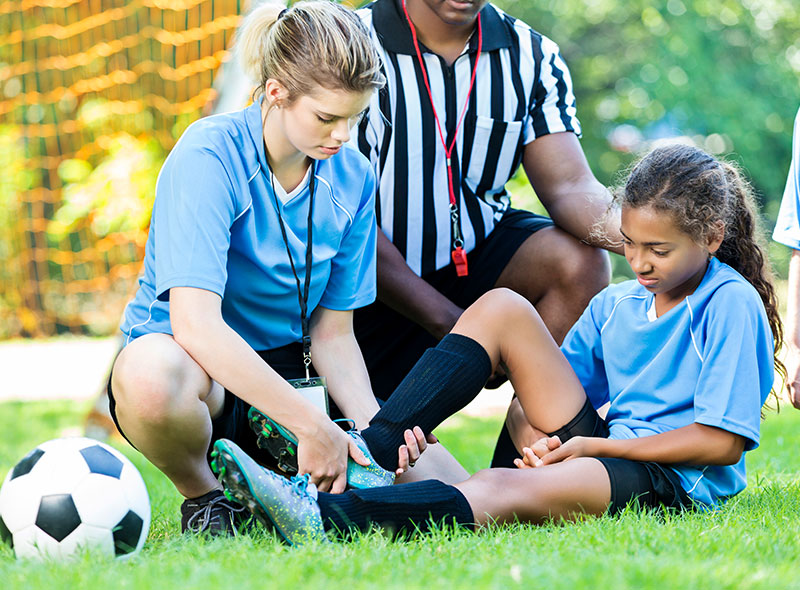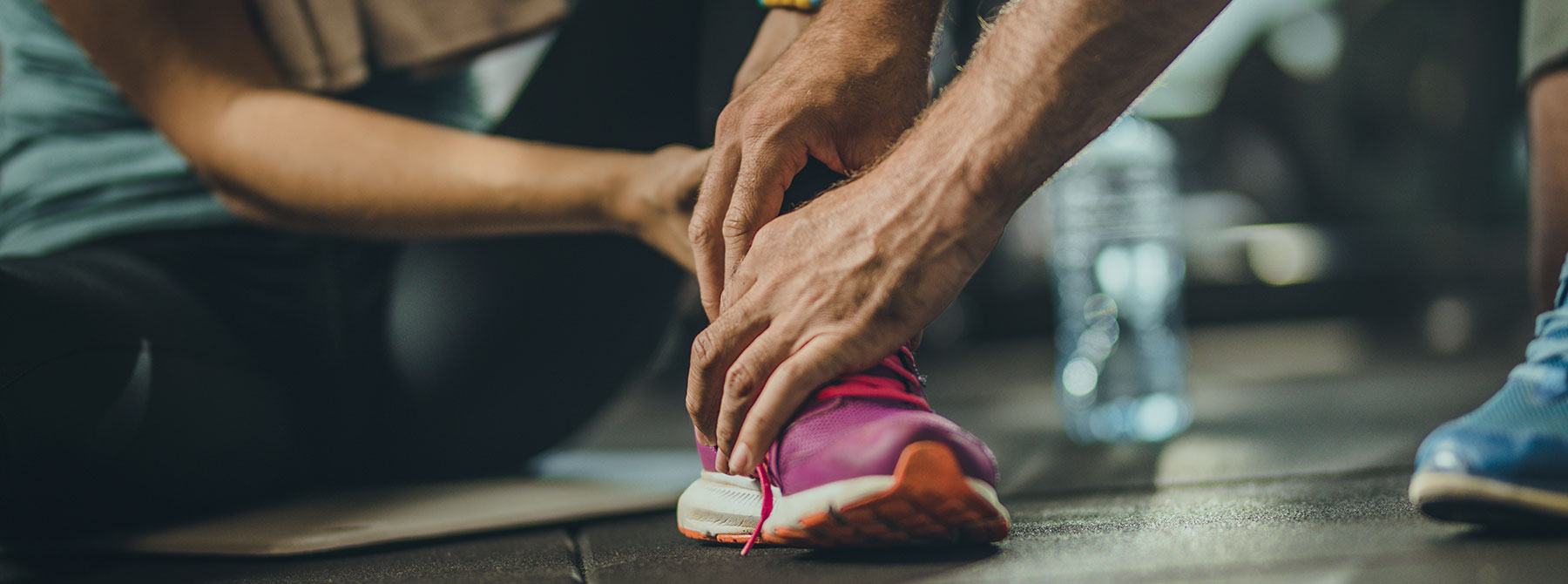The ultimate guide to
Sports Medicine
Get back in the game or back to doing what you love. This guide to common sports injuries will help you understand what your pain means, what might be causing it and how you can prevent injuries.
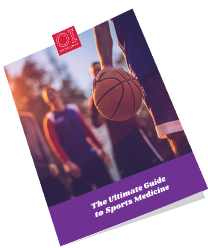
This guide discusses...
Relieve pain, prevent injury and sharpen your athletic potential
You work hard to reach your goals. You push your body and your mind to go further and achieve more. You’re an athlete, a champion and you’re not willing to quit.
Sometimes your body has other ideas
Pain in your bones, joints or muscles. Pain that won’t go away no matter how hard you try to ignore it. Pain you feel like you have to push through.
At OrthoIndy, our sports medicine specialists work as a team to make sure you aren’t sitting on the sidelines. From our urgent care clinics, our specialized doctors, our trusted surgeons and our physical therapists, we focus on getting you back in the game as a one stop shop for sports injuries.
The Ultimate Guide to Sports Medicine is jam-packed with the best sports medicine advice from OrthoIndy, home of the official orthopedic care providers of the Indiana Pacers and the Indiana Fever.
You don’t have to let pain keep you from doing what you love
Whether you’re a little league all-star, high school athlete, weekend warrior, exercise addict or simply trying to get or stay in shape, with the right care, you can get back in the competition.
This comprehensive guide will help you:
- Better understand what your pain means
- Figure out what might be causing it
- Learn how you can prevent injury
- Discover how a sports medicine specialist can bring you relief
1 Common sports injury symptoms (plus, when you should seek help from an expert)
Many sports injuries are caused by overuse and improper warm ups or cool downs. However, some injuries might be a result of an unexpected movement or twist, a sudden collision or blow, a fall or incorrectly landing after a jump.
Treatment for your injury depends on your symptoms. Do any of these sound familiar?
Top 10 sports injuries and their symptoms
Achilles tendinitis
- Pain and stiffness along the Achilles tendon in the morning
- Pain along the tendon or back of the heel that worsens with activity
- Severe pain the day after exercising
- Thickening of the tendon
- Bone spurs
- Swelling that is present all the time and gets worse with activity
ACL tear
- Knee swelling
- Knee pain
- Loss of full range of motion
- Discomfort when walking
- Tenderness
- Feeling of instability in the knee
Ankle sprain
- Immediate ankle pain
- Swelling
- Bruising
- Tenderness to the touch
- Difficulty walking
Dislocated shoulder
- Swelling
- Numbness
- Weakness
- Bruising
- Pain
- Unsteadiness
Groin pull
- Popping or snapping feeling during the injury
- Pain and tenderness in the groin and inside of the thigh
- Severe pain
- Pain when raising your knee
Hamstring strain
- Sudden sharp pain in the back of the thigh
- Bruising or discoloration on the back of your leg
- Swelling
- Weakness in hamstring
MCL tear
- Knee swelling
- Knee pain
- Tenderness
- Difficulty moving the knee
- Bruising
- Feeling of instability
Patellofemoral Syndrome
- Knee pain after sitting for a long period of time with knees bent
- Pain after change in activity level or intensity
- Popping or crackling sounds in the knee
- Knee pain during exercise and activities that require repeatedly bending the knee
Shin splints
- Pain in the tibia or shin
- Shin is tender to the touch
- Pain is usually heightened during activity and relieved by rest
- Dull aching pain that occurs in the posterior medial tibia just below the mid-portion of the bone
Tennis elbow
- Elbow pain that develops gradually
- Weak grip strength
- Pain or burning on the outer part of your elbow
- Pain worsened with forearm activity, such as holding a racquet or turning a wrench
To see a doctor or tough it out
Use this infographic to determine if you can treat the injury at home or if it’s time to call the doctor.
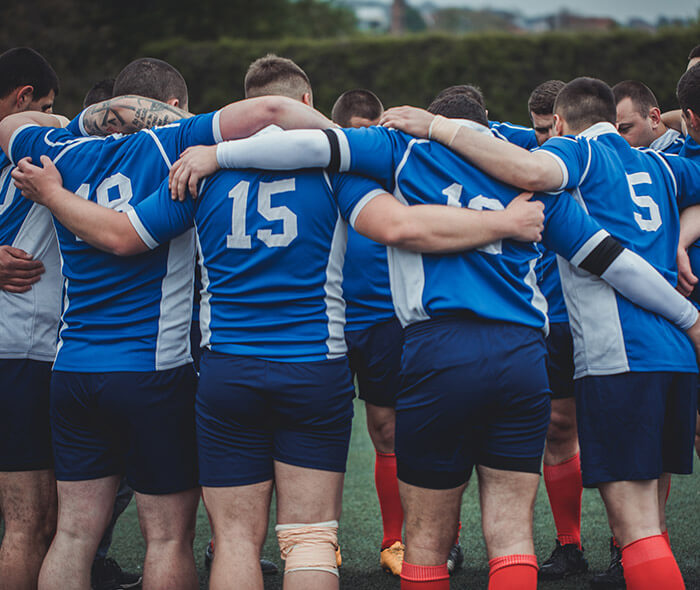
Injuries by sport
Managing your pain without professional help
You may be able to relieve pain or tenderness in a muscle or tendon with a few simple strategies that you can try on your own before deciding to see a doctor:
- Rest the injured area for 48 hours
- Ice intermittently during the first 24 to 48 hours; never put ice directly on the skin, use a thin towel and apply ice for 20 minutes every two hours
- Compression bandages can be used to reduce swelling and restrict movement; great care should be taken to not apply wrap too tightly
- Elevation by raising the injured limb to an elevated and resting position above the heart
- Gently stretch the tight muscle a few times throughout the day
When your pain isn’t going away, should you see a doctor or tough it out?
If you have something beyond the usual aches and pains, that aren’t going away with rest this may be an indicator that something is seriously wrong.
Make an appointment with a sports medicine specialist or visit urgent care if you have any of the following symptoms:
- Inability to fully move a body part such as your arm or leg
- Back or neck pain
- Inability to stand or walk
- Joint instability or locking
- Visible deformity in the arms, legs or joints
- Pain that keeps you from sleeping
- Pain that does not go away with rest
According to OrthoIndy sports medicine specialist Dr. Matthew Lavery, the answer is simple:
“Listen to your body. While we all have discomfort from time to time, more severe pain isn’t normal. If you are in extreme pain, stop that activity immediately and let your body rest. If it doesn’t improve with rest within a week or two, you may need to make an appointment with a sports medicine specialist.”
Unsure if you should seek professional help? Learn more
Don’t see your symptoms? View more sports injuries treated at OrthoIndy
2 Prevention: Avoid the ER and minimize your chance of injury
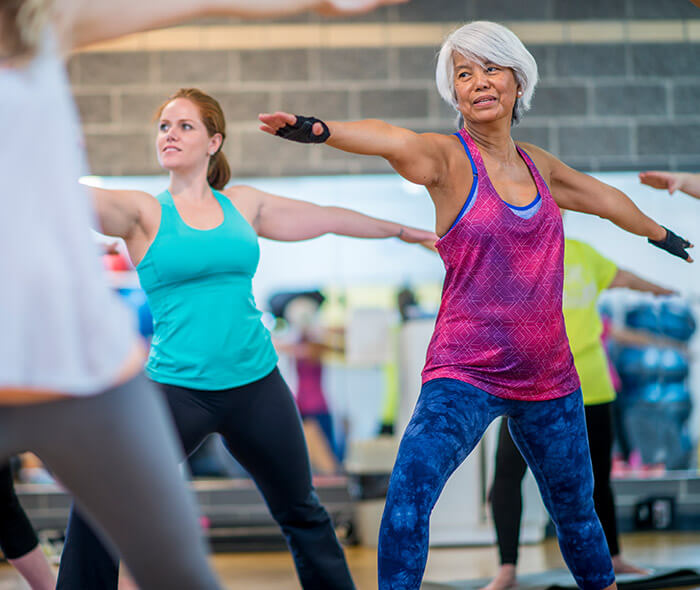
Staying active in your 30s, 40s, 50s and beyond
It is important to live an active lifestyle at any age. Getting older is inevitable, but we have tips for avoiding injury, getting in shape, and staying active as the years go by.
Playing high impact sports or consistently exercising can be tough on your body. It’s inevitable that some injuries will occur; however, following a few recommendations reduces your chance of a sports injury or re-injury.
Listen to your body
As a competitive individual it’s often tempting to jump right back into an active lifestyle. However, it’s important to moderate your return to sports activity based on your injury and your physician’s recommendations.
“Physicians are your coaches in enabling your return to play,” said Dr. Stephen Kollias, OrthoIndy sports medicine specialist. “Follow their advice for the most successful outcomes of your injury. Not following the recommended program is like running the wrong play on the field and leads to repeat injury or lack of healing.”
Although some pain is okay, if your body is unusually sore after a workout or you are experiencing pain similar to your original injury, stop that activity immediately. Follow the advice of your doctor or physical therapist to gradually return in a safe manner.
“A lot of sports related injuries can be prevented by following a few guidelines,” says Dr. Scott Gudeman, OrthoIndy sports medicine physician. “If you want to avoid sitting on the sidelines or laying around, you have to be safe and listen to your body.”
Quick tips to prevent injury
- Practice safe techniques for your sport
- Increase training gradually over time
- Get a yearly physical
- Warm up and cool down before activity
- Do cardio and strength training
- Stretch even a little bit everyday
- Let your body rest
- Don’t ignore the pain
- Wear recommended safety gear, even at practice
- Listen to your trainer, doctor or physical therapist
“Age itself should never be a factor in whether or not you exercise,” said Dr. Jonathan Shook, OrthoIndy sports medicine specialist. “Exercising actually helps keep your body and mind strong and decreases the chance of injury, illness, depression and exhaustion. It also increases bone density and can help prevent osteoporosis.”
Read about preventing sports-related injuries (BLOG ARTICLE)
3 Treatment: Options to help you get back in the game—and, win!
If you haven’t been able to find relief with at home treatment options for your sports injury, you might need professional help. OrthoIndy sports medicine specialists are experts at what they do.
Their focus is always on having an athlete return to his or her sport or activity. After your initial appointment or urgent care visit, a sports medicine specialist may recommend a variety of treatment options depending on your specific injury.
The best thing an athlete or active individual can do after an injury or experiencing pain is to immediately treat and pay attention to their injury at home. If that doesn’t work, a sports medicine specialist will determine the best course of treatment for the specific injury.
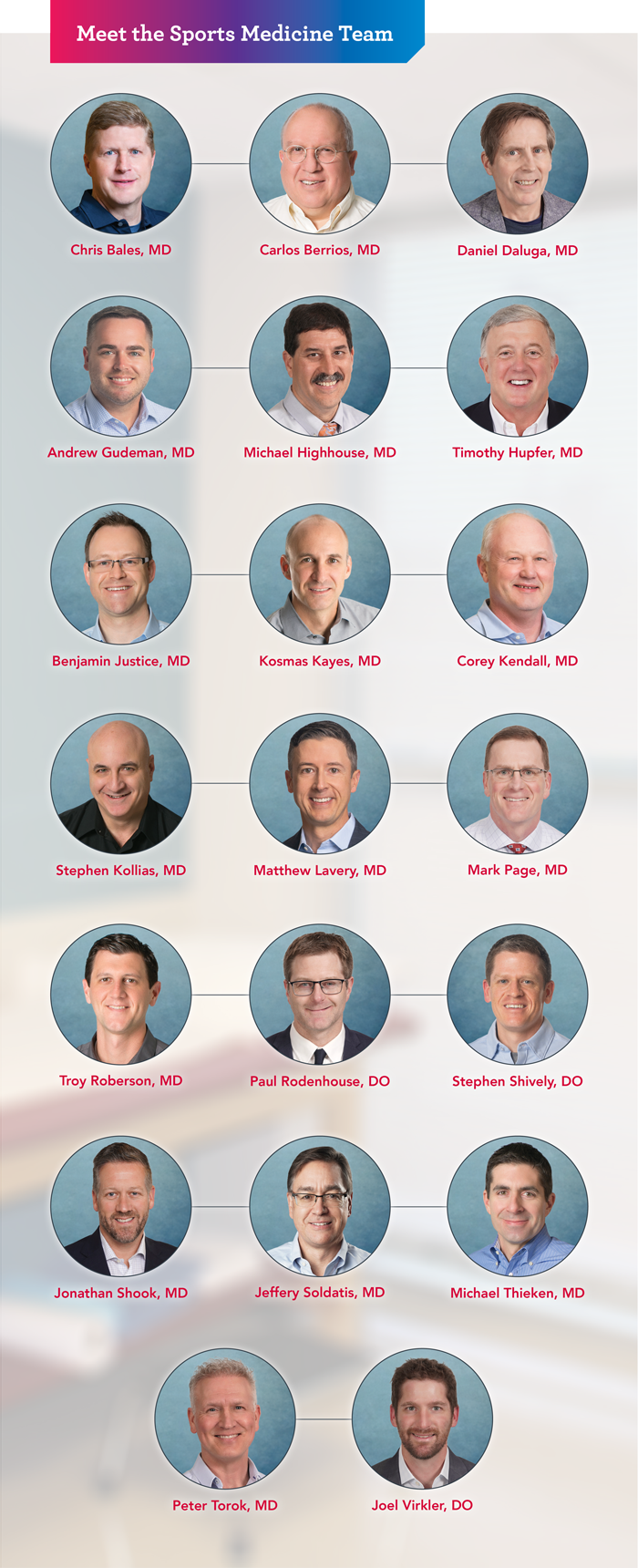
Treatment options for sports injuries
- Non-steroidal anti-inflammatory drugs (NSAIDs) such as ibuprofen
- Home exercise program to strengthen muscles
- Physical therapy to increase strength and flexibility
- Immobilization devices such as crutches, a walking boot, arm sling or ankle brace
- Steroid injections
- In extreme cases, surgery may be necessary
Sports medicine surgery
Surgery for sports injuries are almost always arthroscopic, which usually means a smaller incision, less painful healing and an easier recovery time or return to sports and activities.
OrthoIndy sports medicine specialists use the most advanced techniques to provide patients with the best chance to return to their pre-injury performance level.
Most sports injury surgeries are primarily outpatient and you will go home the same day. Your surgeon and physical therapist determine post-operative care unique to your injury.
You may have some short-term restrictions with weight bearing or motion during the first few weeks after surgery. Your sports medicine specialist will evaluate you and take X-rays around six weeks after your surgery. During this visit, your doctor will let you know about any potential restrictions and when you can return to your sport.
Your child and sports injuries
“Overuse injuries in children are far too common, especially because they can easily be prevented with rest,” said Dr. Chris Bales, OrthoIndy sports medicine specialist. “For example, if your child plays baseball, make sure they aren’t pitching every single game and practice and training all year round. Their shoulder needs a break.”
4 Recovery: What to expect during rehabilitation
With the wide variety of sports injuries and treatments, it’s hard to determine what specific course of action you will require to return to your sport or activity.
According to Dr. Corey Kendall, OrthoIndy sports medicine specialist, “Recovery after an injury is just as important as the treatment to prevent re-injury and avoid further complications.”
Before you get back in the game:
- Allow time for your body to heal
- Stay positive even when you are feeling frustrated
- Restore full range of motion in the injured body part
- Regain muscle strength and endurance
- Regain skills necessary for safe return
- Regain confidence in yourself and your body
- Gradually return to your sport
How soon can you return to normal activity?
Recovery time varies by sports injury. Some athletes may return to their usual activity in one week, while for others it may take five months or longer.
It’s important to listen to your doctor or physical therapist to make sure you allow your body the right amount of time to heal.
If you are in shape pre-injury and do not have an illness, the following recovery times provide an estimate of the time it may take to return to activity. However, in all cases your doctor or physical therapist will determine your specific timeline to return to activity.
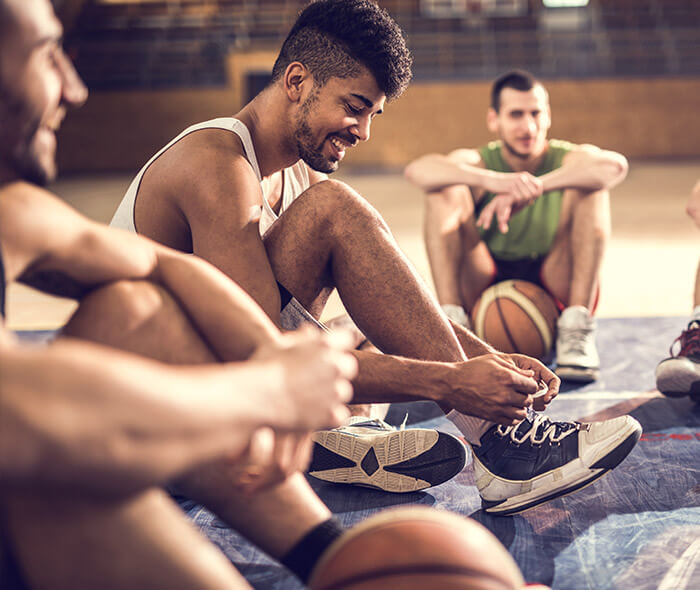
Sprains and strains
- Sprained ankle: Five days for a minor sprain; three to six weeks for a more severe sprain
- Calf strain, pull or tear: Two weeks to three months or more
- Hamstring strain: Two weeks to three months or more
Broken bones
- Fractured bone: At least six weeks
- Fractured finger or toe: Three to five weeks
- Fractured clavicle (collarbone): Five to ten weeks
Other sports injuries
- Shin splints: Two to four weeks
- Shoulder separation: Two weeks
- Groin pull: Four to six weeks
- ACL tear: Five to 12 months
- MCL tear: Two to six weeks
- Tennis elbow: Two weeks to six months
- Achilles tendinitis: Three to six months
How can physical therapy help your recovery process?
Exercise and movement are important following surgery. Muscle contractions through exercise release nitric oxide, which decreases inflammation, aids in wound healing and helps prevent stiffness.
OrthoIndy physical therapists are trained to help athletes return to their sport and provide a specific set of exercises for your injury and your sport you want to return to. This helps athletes stay on track and focus on strengthening the right muscles.
Rehab goes high-tech
OrthoIndy’s physical therapy team helps patients rehab faster—and train like a pro—with the AlterG Anti-Gravity Treadmill.
This technologically advanced piece of exercise equipment uses anti-gravity technology from NASA that allows you to workout without pain, even while you’re recovering from a sports injury.
5 Cost and Outcomes: Is the cost of seeking professional help worth it?
When you know you have to have professional treatment for a sports injury, paying for these new medical expenses can be worrisome. First, it’s important to check with your insurance provider to ensure OrthoIndy is in your network. OrthoIndy and OrthoIndy Hospital participates in most major insurance networks.
Many insurance companies have pricing tools that take into account your benefit plan. Visit your insurance provider’s website to see if this is available to calculate surgery costs.
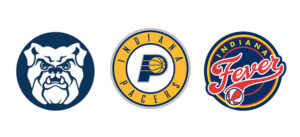
Trust the docs the pros trust
OrthoIndy sports medicine specialists provide orthopedic coverage to many local, professional, collegiate and high school teams, including:
6 Sports Medicine Resources
Guides
- How to tell if you should visit an urgent care clinic, make an appointment or treat your injury at home [ INFOGRAPHIC ]
- Tips for staying active—without injury—in your 30s, 40s, 50s and beyond
Blog Articles
- AlterG® Anti-Gravity Treadmill® helps patients rehab faster
- Common treatment options for sports injuries
- Preventing sports-related injuries (and re-injury)
- Sports injury: See a doctor or tough it out?
- What to expect during recovery from a sports injury
Videos
- Sports Medicine Anthem: A message about sport’s injury care at OrthoIndy
- Watch injury-specific therapy exercise videos
Sports medicine treatment at OrthoIndy
OrthoIndy sports medicine specialists focus on treating your injuries with the best options to keep you in the game and keep you active at all periods of your life.


